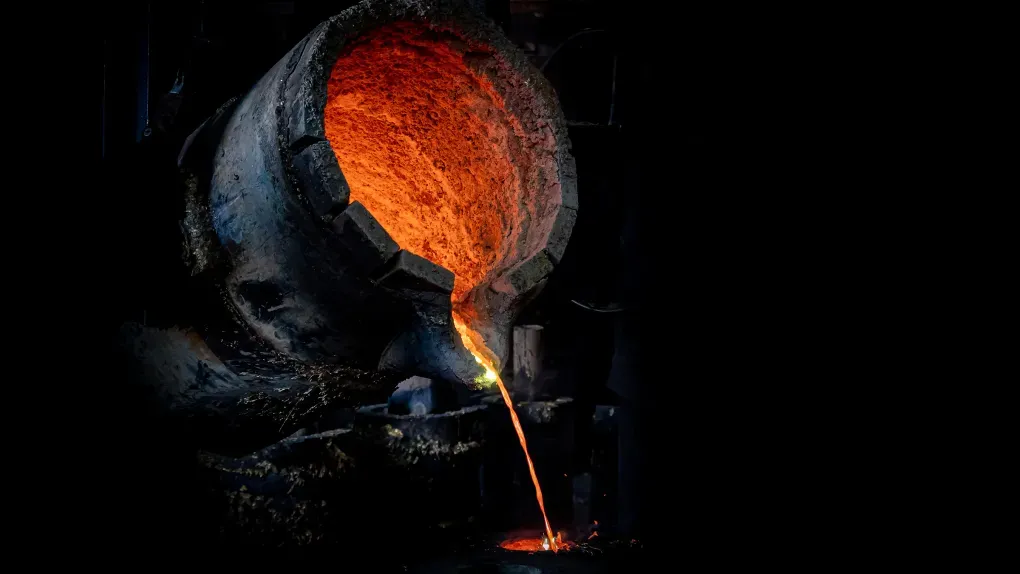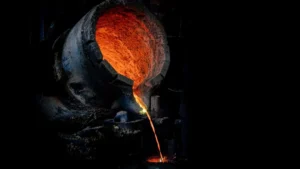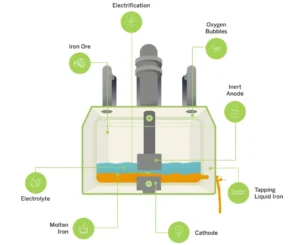Boston Metal, an MIT spinout, is commercializing an innovative method for producing steel and other metals, aiming to reduce emissions in this high-pollution industry. Steelmaking is crucial to global industries, but its current processes are highly detrimental to the climate, contributing approximately seven to nine percent of global greenhouse gas emissions. To address this issue, former MIT scientists founded a company to develop a cleaner alternative using electric steelmaking.
Steel, a backbone of modern life used in skyscrapers, cars, airplanes, and bridges, is one of the most useful materials on the planet Earth. However, its production is highly polluting, typically involving the mining of iron ore, reduction in a blast furnace with coal, and purification in an oxygen furnace to remove excess carbon and impurities. This conventional method makes steelmaking responsible for approximately 7 to 9 percent of global greenhouse gas emissions, ranking it among the dirtiest industries worldwide.
Boston Metal, founded by MIT Professor Emeritus Donald Sadoway, Professor Antoine Allanore, and James Yurko PhD ’01, is aiming to revolutionize the steelmaking industry with an innovative electrochemical process known as “Molten Oxide Electrolysis” (MOE). This method streamlines the steelmaking process and emits only oxygen as sole byproduct, significantly reducing environmental impact.
At its Brazilian subsidiary, Boston Metal do Brasil, the company is already utilizing MOE to recover high-value metals from mining waste. This application not only helps mitigate waste but also demonstrates the commercial viability of their technology, enhancing partnerships with mining operators.
The experience gained in Brazil is instrumental for Boston Metal as it prepares to scale up its technology. The company is leveraging this work to refine its processes and ensure they are ready for widespread industrial adoption.
To further this mission, Boston Metal has developed a prototype “MOE Reactor” at its headquarters in Woburn, Massachusetts. This reactor is a key step toward producing green steel, positioning Boston Metal at the forefront of sustainable steelmaking.
For years, researchers have sought to harness an electrochemical process for steelmaking, but scaling it to commercial levels has not been possible. This challenge is being overcome by Boston Metal’s innovative approach.
RELATED POST
According to a 2013 paper published by the company, their method employs modular molten oxide electrolysis (MOE) cells and a unique inert iron anode that doesn’t dissolve in the liquid electrolyte. This inert anode allows electricity to pass through it, splitting the iron oxide bonds in the ore and producing pure liquid metal, thus enabling the electric steelmaking process.
Boston Metal’s technique is on track to reach commercial scale by 2026, with significant progress already made. A factory in Brazil is currently utilizing the MOE process, demonstrating its practical application and effectiveness. This Brazilian operation not only validates the technology but also provides valuable insights for further scaling and optimization.
In conclusion, Boston Metal is addressing the environmental challenges posed by one of the world’s most polluting industries through their innovative use of electrochemical processes which include molten oxide electrolysis (MOE).
With their successful implementation of MOE in Brazil and their ongoing advancements towards commercial scalability, Boston Metal is transforming the steel industry into a cleaner, greener, and more environmentally friendly sector.


